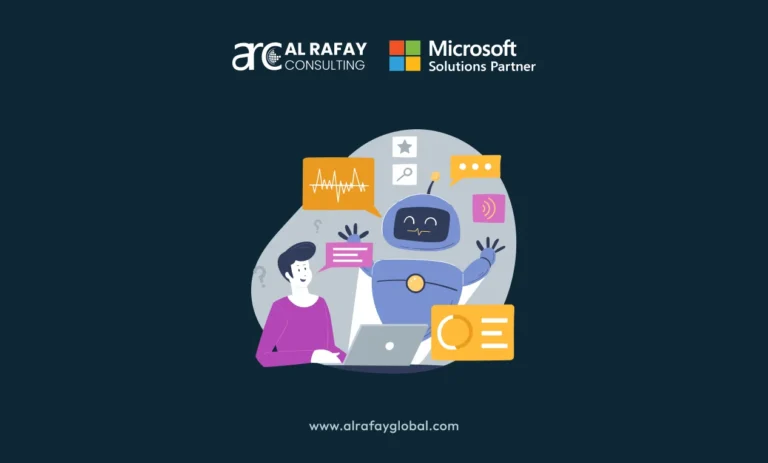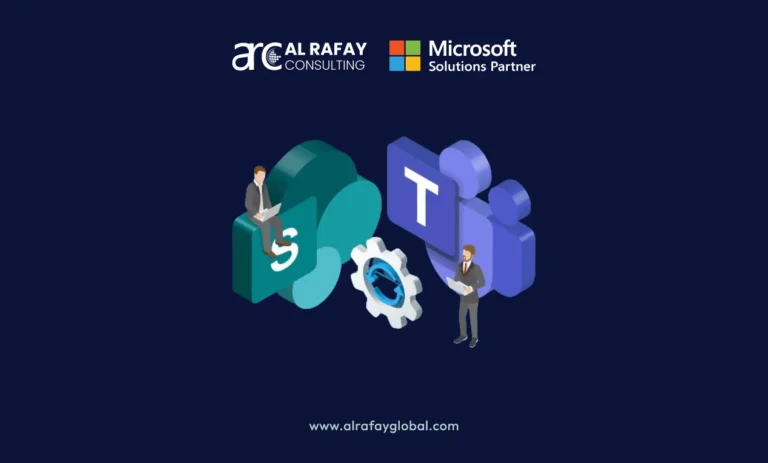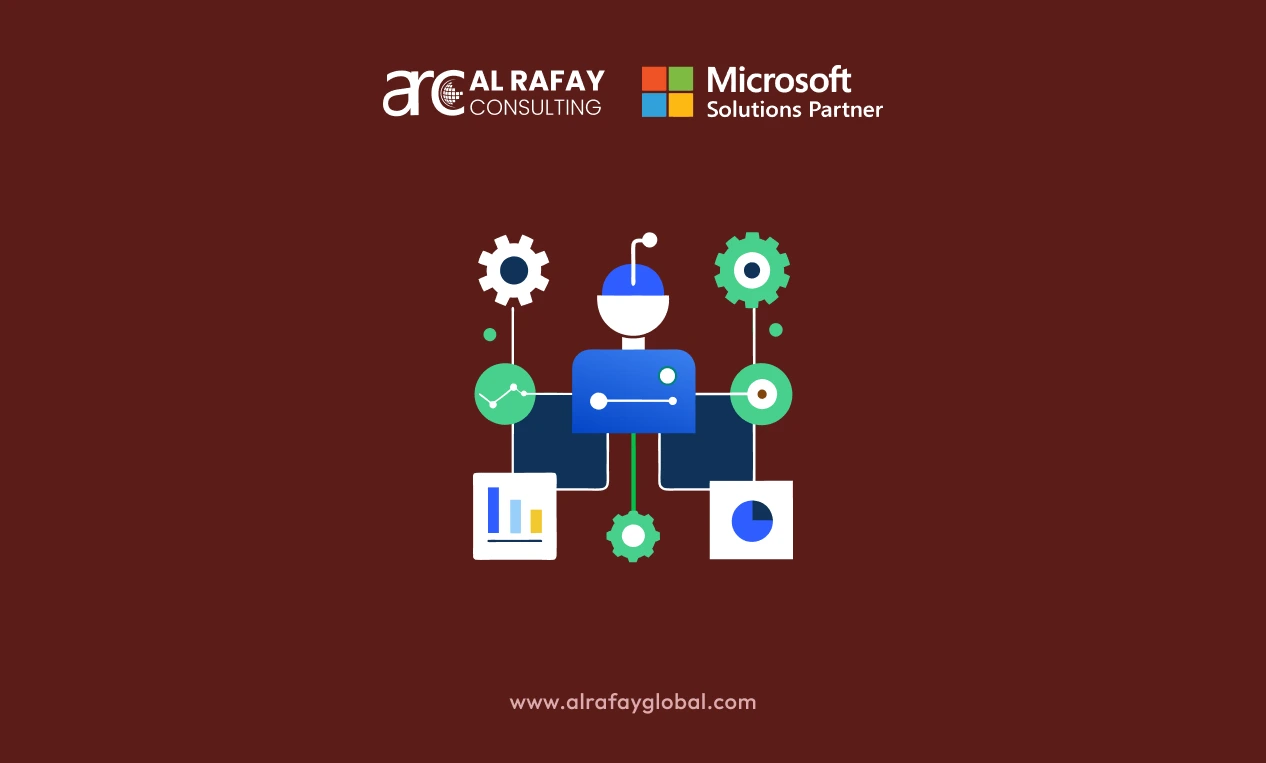Hyperautomation is a cutting-edge concept that represents the next step in the evolution of automation technologies. It integrates various advanced technologies such as Robotic Process Automation (RPA), Artificial Intelligence (AI), Machine Learning (ML), and low-code/no-code platforms to automate more complex and dynamic business processes. Unlike traditional automation, which focuses on repetitive, rule-based tasks, hyper-automation aims to create a more adaptive and intelligent system capable of automating entire end-to-end processes across an organization.
In the context of digital transformation, hyper-automation is a key driver. As businesses continue to scale, the need for end-to-end automation becomes essential. According to a 2021 Gartner report, hyper-automation is expected to be a $596 billion market by 2022, reflecting its rapid adoption in industries worldwide. With enterprises demanding solutions that can automate not just tasks, but workflows involving both structured and unstructured data, hyper-automation is now viewed as a major trend in business innovation.
Automation vs. Hyperautomation
Traditional Automation:
Traditional automation is characterized by the automation of specific, repetitive tasks, often within predefined and rigid boundaries. This is generally rule-based and ideal for automating structured tasks such as data entry or email filtering. While it improves efficiency, it is limited to individual tasks and generally deals with structured data.
Hyperautomation:
Hyperautomation extends the capabilities of traditional automation by incorporating cognitive technologies such as AI and ML to handle unstructured data and complex workflows. The goal is to create a system where machines can not only automate tasks but also orchestrate entire processes that span across multiple departments. Hyperautomation connects various automation technologies to create a digital workforce that continuously learns, adapts, and optimizes processes.
| Aspect | Traditional Automation | Hyperautomation |
| Scope | Automates repetitive tasks | Automates workflows, tasks, and decisions |
| Technology Stack | RPA, rule-based algorithms | RPA, AI, ML, Process Mining, Analytics |
| Data Handling | Structured data only | Both structured and unstructured data |
| Optimization | Static once implemented | Continuous optimization using AI |
Hyperautomation introduces decision-making capabilities through the integration of AI, enabling businesses to automate complex workflows involving human and digital workers. This combination allows for continuous process optimization, elevating business operations to new levels of efficiency.
Core Components of Hyperautomation
Robotic Process Automation (RPA)
At the foundation of hyper-automation is RPA, which enables the automation of repetitive and high-volume tasks. These tasks are typically rule-based and include data entry, file transfers, and email automation. While RPA is instrumental in automating individual tasks, its true potential is realized when combined with other technologies like AI and ML.
Artificial Intelligence (AI) and Machine Learning (ML)
AI and ML form the intelligence layer of hyper automation. AI enhances automation by allowing systems to analyze, learn, and adapt based on historical data. Machine Learning algorithms can make predictive decisions, further reducing human intervention in complex decision-making processes. For instance, AI-driven chatbots are becoming essential in customer service, providing personalized responses based on real-time data.
Business Process Management (BPM)
BPM is another critical component, focusing on orchestrating and optimizing workflows. It allows hyper-automation systems to model, monitor, and optimize business processes from start to finish. BPM systems enable enterprises to map their processes and identify which tasks can be automated, thus ensuring that hyper-automation is deployed effectively across various business functions.
Low-Code/No-Code Development Platforms
To democratize automation, low-code/no-code platforms play a pivotal role by allowing business users without extensive programming skills to build automation workflows. These platforms reduce the reliance on IT teams and allow business analysts and other non-technical users to create and modify automation processes, accelerating the implementation of hyper-automation.
Process Mining and Analytics
Process mining tools analyze existing workflows to identify automation opportunities and optimize ongoing processes. By leveraging historical data and process logs, process mining provides real-time insights into bottlenecks and inefficiencies, making it a key enabler in scaling hyper-automation initiatives.
Key Technologies of Hyperautomation
A. Process Discovery
Process discovery tools use AI and analytics to automatically identify, document, and map business processes that are suitable for automation. They reduce the manual effort traditionally involved in process mapping, offering a comprehensive overview of the automation landscape. This helps businesses focus on high-impact areas, leading to faster and more accurate automation implementations.
B. Intelligent Document Processing (IDP)
IDP leverages AI to capture, extract, and process unstructured data from sources such as emails, PDFs and scanned documents. By automating document-heavy workflows, IDP eliminates human intervention and increases the accuracy and speed of processes such as invoice processing or contract management.
C. Robotic Process Automation (RPA)
RPA continues to be a cornerstone technology in hyper-automation, providing scalable solutions for rule-based, repetitive tasks. The scalability and system compatibility of RPA make it ideal for integrating with legacy systems, allowing hyper-automation to take root without requiring significant overhauls of existing IT infrastructure.
| Technology | Function in Hyperautomation | Key Benefits |
| Process Discovery | Automatically identifies automation opportunities | Reduces manual effort in process mapping |
| Intelligent Document Processing (IDP) | Automates document-heavy workflows | Increases accuracy and speed |
| RPA | Automates repetitive tasks | Scalable and integrates with existing systems |
These technologies collectively work to automate both structured and unstructured workflows, enabling businesses to handle more complex and nuanced processes.
Supporting Hyperautomation with an AI + Automation Enterprise System
To manage hyper-automation at scale, many enterprises are turning to AI + automation enterprise systems that integrate various automation technologies into a single platform. These unified systems typically combine AI models, RPA bots, workflow automation, and analytics tools.
Components of an AI + Automation System:
- RPA for task automation
- AI/ML models for decision-making and process optimization
- Workflow automation tools to orchestrate tasks across departments
- Analytics tools for continuous monitoring and process improvement
- RPA for task automation
Platforms such as UiPath and Automation Anywhere offer these unified systems, providing an orchestrated approach to hyper-automation. Such systems ensure better oversight of automation processes and provide organizations with the ability to scale automation initiatives across departments.
How Hyperautomation Works
Discovery Phase:
The process begins with identifying automation opportunities using process mining and analytics tools. These tools evaluate existing workflows and pinpoint inefficiencies that can be addressed through automation.
Automation Phase:
Once opportunities are identified, RPA bots are combined with AI/ML models to automate complex workflows. For instance, an RPA bot might automate the gathering of data from various systems, while AI models make decisions based on that data.
Optimization and Scaling:
Hyperautomation doesn’t end with the initial implementation. Businesses use data-driven insights and AI-driven decision-making to continuously monitor and optimize their processes, scaling their automation efforts as needed.
Human in the Loop:
Even in highly automated environments, human oversight is critical, particularly in high-level decision-making. A “human-in-the-loop” model ensures that while machines handle routine tasks, humans provide input in more strategic areas, such as making ethical or customer-facing decisions. According to a report by Flair, most of the work currently automated by companies is related to low-level tasks such as data entry (38%) and inventory management (27%). For these tasks, human intervention is not required, however, if the tasks were related to making key business decisions then the situation would require human supervision.
Key Benefits of Hyperautomation
Increased Efficiency:
Hyperautomation significantly reduces the time spent on manual tasks. A report by Gartner found that RPA alone can lead to a 30% cost reduction in administrative functions.
Cost Savings:
Automating end-to-end processes helps businesses reduce errors and streamline workflows, resulting in significant cost savings over time.
Improved Decision-Making:
By leveraging AI and real-time data analytics, hyper-automation enables better decision-making at all levels of the organization. AI provides actionable insights that help businesses react quickly to market changes.
Scalability:
Hyperautomation offers seamless scalability, allowing businesses to handle increased workloads without requiring proportional increases in human resources.
Enhanced Employee Productivity:
By shifting the focus of employees from repetitive tasks to more value-driven work, hyper-automation increases employee productivity. This frees up talent to focus on innovation, strategy, and customer engagement.
| Benefit | Example |
| Increased Efficiency | 30% cost reduction in admin tasks via RPA |
| Cost Savings | Reduced operational errors, faster workflows |
| Improved Decision-Making | AI-driven insights for real-time decisions |
| Scalability | Ability to handle more work with fewer resources |
| Enhanced Productivity | Employees focus on high-value tasks |
Real-World Use Cases of Hyperautomation
Hyperautomation is significantly reshaping various industries by automating critical processes, enhancing efficiency, and allowing organizations to focus on strategic initiatives. Here are some key areas where hyper-automation is making a substantial impact:
Finance and Accounting
In the finance sector, hyper-automation is revolutionizing how departments manage their operations. Processes such as invoicing, payment processing, and reporting are being automated, which minimizes human error and accelerates transaction times. AI-driven systems are increasingly being utilized for advanced fraud detection and compliance checks, enabling organizations to identify suspicious activities quickly and ensure adherence to regulatory requirements. This not only enhances accuracy but also provides finance teams with more time to analyze data and make strategic decisions.
Healthcare
The healthcare industry is experiencing a significant transformation through hyper-automation. Patient data management has become more efficient, with automation streamlining processes like appointment scheduling and insurance claim processing. Robotic process automation (RPA) and AI help reduce the administrative workloads faced by healthcare professionals, allowing them to devote more time to patient care. By automating routine tasks, healthcare providers can enhance operational efficiency and improve patient outcomes, ultimately contributing to a better healthcare experience.
Manufacturing
Manufacturers are harnessing the power of hyper-automation to create a more integrated approach to production and supply chain management. By connecting production planning systems with predictive maintenance tools, manufacturers can ensure minimal downtime and optimal resource utilization. Automated systems can forecast equipment failures, allowing for timely maintenance and reducing disruptions in the production process. This integration leads to improved operational efficiency, reduced costs, and enhanced competitiveness in the market.
Retail and E-commerce
In the retail and e-commerce sectors, hyper-automation is transforming customer experiences through personalization and efficiency. Retailers are employing AI and RPA to tailor shopping experiences to individual preferences, ensuring that customers receive relevant recommendations and promotions. Automation also plays a crucial role in order fulfillment and inventory management, allowing businesses to respond quickly to changing customer demands. By streamlining these processes, retailers can enhance customer satisfaction and drive sales growth.
Human Resources
Hyperautomation is also making significant strides in the realm of human resources. By automating tasks such as onboarding, payroll processing, and performance management, HR teams can alleviate the administrative burden that often hampers their efficiency. This shift allows HR professionals to focus on more strategic aspects of workforce management, such as talent development and employee engagement. With hyper-automation, HR departments can foster a more agile and responsive workplace, ultimately leading to improved employee satisfaction and retention.
Challenges and Limitations of Hyperautomation
Hyperautomation offers numerous advantages, but it also presents several challenges and limitations that organizations must navigate to ensure successful implementation.
Complexity of Integration
One of the primary challenges of hyper-automation is the complexity of integrating multiple automation technologies. This is particularly true when legacy systems are involved. Organizations often rely on a mix of old and new technologies, making it difficult to achieve seamless integration. Each system may have unique requirements and limitations, which complicate the process. Effective integration requires meticulous planning, extensive testing, and specialized expertise to ensure that all components work harmoniously together. Without a comprehensive strategy, organizations may face operational disruptions that undermine the benefits of automation.
Data Security and Privacy Concerns
Another significant challenge lies in managing data security and privacy. As organizations handle large volumes of sensitive data, especially in sectors like healthcare and finance, they encounter substantial risks. A single data breach can lead to severe financial losses and reputational damage. Therefore, it is crucial to implement robust encryption methods and establish stringent governance policies to protect sensitive information. Compliance with regulations such as GDPR and HIPAA further adds to the complexity of ensuring data security.
Skill Gaps and Change Management
The implementation of hyper-automation often reveals a noticeable skills gap among employees. Many organizations lack personnel who possess the necessary knowledge and experience to manage and scale hyper-automation projects effectively. To bridge this gap, businesses must invest in training and upskilling their workforce. Effective change management strategies are also essential to facilitate a smooth transition and ensure employee buy-in.
Initial Investment Costs
While hyper-automation can yield long-term cost savings, the initial investment required for advanced technologies like artificial intelligence (AI) and robotic process automation (RPA) can be substantial. Organizations must evaluate the return on investment and carefully assess their budgets before embarking on hyper-automation initiatives.
Over-reliance on Automation
Lastly, an over-reliance on automation can pose significant risks. Automating processes too quickly may lead to the erosion of human judgment in critical decision-making scenarios. Organizations must strike a balance between automation and human oversight to maintain a healthy decision-making environment.
Best Practices for Implementing Hyperautomation
Successfully implementing hyper-automation requires a strategic approach that addresses potential challenges while maximizing benefits. Here are some best practices to consider:
Start Small and Scale
When beginning your hyper-automation journey, it’s wise to start small. Focus on automating simpler, high-impact processes that can deliver quick wins and measurable results. This approach reduces the risk of project failure and provides valuable insights into how automation can be effectively integrated into your organization. As confidence and expertise grow, you can gradually scale your efforts to encompass more complex workflows, allowing for a smoother transition and greater overall success.
Focus on High-Impact Areas
Identifying and prioritizing high-impact areas for automation is essential. Concentrate on processes that offer the greatest return on investment (ROI) to ensure that resources are utilized efficiently. Common starting points for hyper-automation projects include finance, human resources (HR), and customer service, as these areas often present significant opportunities for cost savings and efficiency gains. By focusing on processes with clear value propositions, organizations can demonstrate the effectiveness of hyper-automation and build momentum for further initiatives.
Cross-Department Collaboration
Collaboration among departments is crucial for the success of hyper-automation initiatives. Ensure that IT teams, business leaders, and department heads work together throughout the hyperautomation journey. Cross-functional input allows for a comprehensive understanding of how automation can align with overall business objectives and operational needs. This collaborative approach fosters a culture of shared ownership and accountability, increasing the likelihood of successful implementation.
Continuous Monitoring and Optimization
Hyperautomation is not a one-time effort; it requires continuous monitoring and optimization to realize its full potential. Leverage artificial intelligence (AI) and analytics tools to keep track of automated processes, identifying areas for improvement and refinement. Regularly reviewing performance metrics helps organizations stay agile and responsive to changing business needs, ensuring that automation efforts remain effective over time.
Training and Upskilling
To address the skills gap that often accompanies hyper-automation, invest in employee training programs. Equip your workforce with the knowledge and tools needed to manage and scale hyper-automation initiatives effectively. Providing ongoing education and support not only enhances employee capabilities but also fosters a culture of innovation and adaptability within the organization. By prioritizing training and upskilling, businesses can ensure that they have the right talent to navigate the complexities of hyper-automation successfully.
Future Trends in Hyperautomation
As technology continues to advance, several key trends are emerging in the realm of hyper-automation. These trends are set to transform the landscape, making automation more intelligent, accessible, and effective across various industries.
AI-Driven Hyperautomation
One of the most significant developments in hyper-automation is the increasing integration of artificial intelligence (AI) and machine learning (ML) technologies. As these technologies continue to evolve, hyper-automation systems are becoming more autonomous and intelligent. This evolution allows for reduced human involvement in repetitive tasks, freeing up employees to focus on more strategic initiatives. With AI-driven analytics and decision-making capabilities, organizations can expect hyper-automation systems to enhance their efficiency and accuracy, leading to better outcomes.
Hyperautomation-as-a-Service
The emergence of Hyperautomation-as-a-Service (HaaS) represents a major shift in how organizations access automation tools. Cloud-based platforms are driving this model, making advanced automation technologies more accessible to businesses of all sizes. HaaS allows organizations to leverage sophisticated tools without the need for significant upfront investments, enabling them to experiment and implement automation solutions more easily. This trend democratizes hyper-automation, allowing small and medium-sized enterprises (SMEs) to take advantage of advanced capabilities previously reserved for larger corporations.
Autonomous Systems
Another notable trend is the rise of autonomous systems. These self-managing and self-healing systems are designed to minimize downtime and reduce the need for human intervention in maintaining automated processes. By utilizing AI and ML algorithms, these systems can monitor their own performance, identify potential issues, and make adjustments autonomously. This not only enhances operational efficiency but also ensures that organizations can rely on their automated processes to run smoothly with minimal oversight.
Increased Adoption in SMEs
As hyper-automation tools become more affordable, there is a noticeable increase in adoption among small and medium-sized enterprises (SMEs). These businesses recognize the potential of hyper-automation to scale their operations, improve productivity, and enhance customer experiences. By implementing hyper-automation solutions, SMEs can streamline processes, reduce operational costs, and compete more effectively in the market. This trend is likely to continue as the barrier to entry for automation tools continues to lower.
Convergence of IoT and Hyperautomation
The integration of the Internet of Things (IoT) with hyper-automation is poised to revolutionize industries such as manufacturing and logistics. This convergence allows for real-time decision-making, as data from connected devices can be harnessed to optimize operations on the fly. For instance, in a manufacturing setting, IoT sensors can provide real-time insights into equipment performance, enabling automated systems to make adjustments that improve efficiency and reduce waste. This dynamic interplay between IoT and hyper-automation creates a more responsive and agile operational environment.
Conclusion
Hyperautomation represents the future of business process automation, combining AI, RPA, and advanced analytics to automate not just tasks, but entire workflows. By increasing efficiency, reducing costs, and enabling better decision-making, hyper-automation is a transformative force in the digital transformation journey of businesses.
If you are looking for hyper-automation solutions or enterprise AI platforms, then contact our expert consultants at Al Rafay Consulting. Our experts have 10+ years of experience in developing custom automation solutions for a variety of industries.













